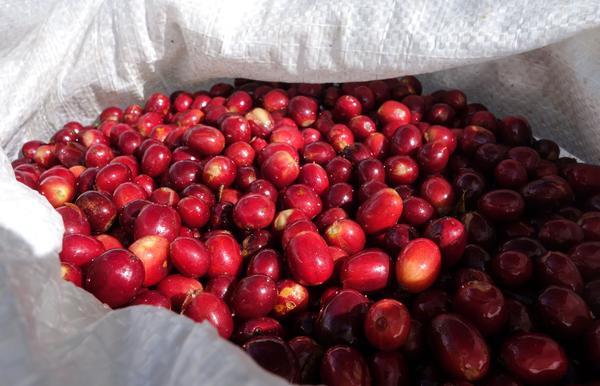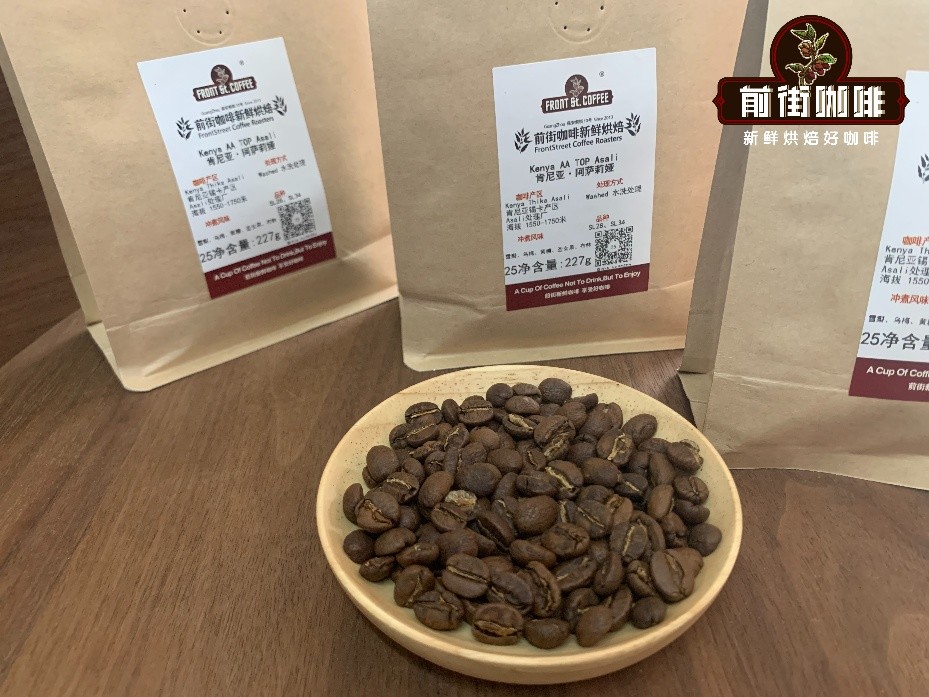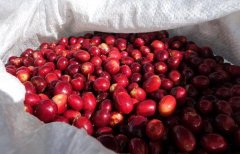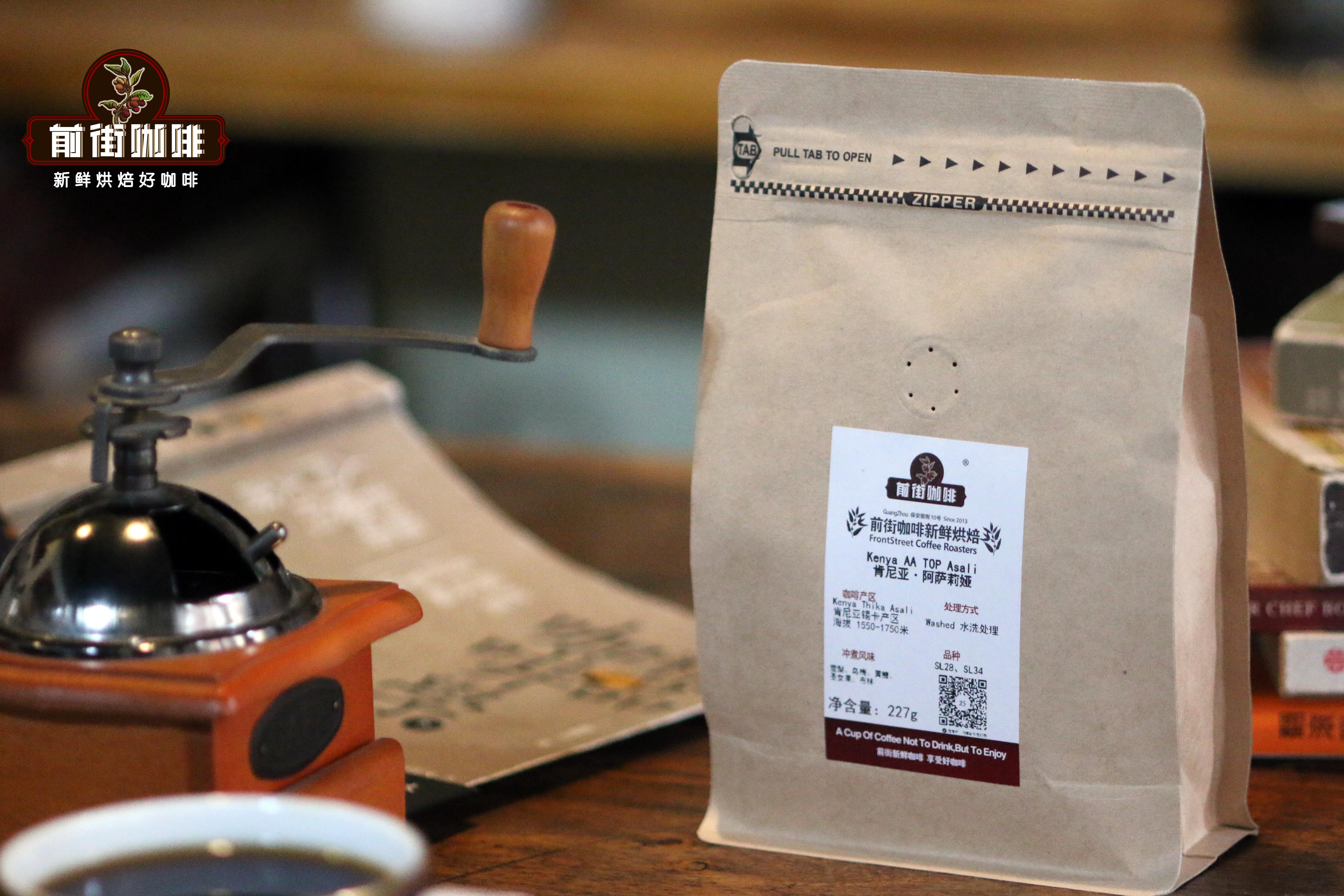Kenya Mulanganieri and other coffee producing areas Sika Asalia Starbucks Kenyan coffee bean flavor
Although coffee cultivation in Kenya started relatively late, the industry has gained and maintained an impressive reputation. Since the beginning of production, Kenyan coffee has been recognized for its high quality, careful preparation and exquisite flavor.
Position in world production:
# 18
Average annual output:
800000 (60 kg bag)
Common Arabica varieties:
SL28 、 SL34 、 K7 、 Ruiru 11 、 Batian
Key areas:
Central Kenya: Neri Nyeri, Mulanga Muranga, Kiriyaga Kirinyaga, Kiambu Kiambu
Eastern Kenya: Meru, Tharaka Nithi, Embu, Machakos | Coast: Taita Taveta
Western Kenya: Bungoma, Kakamega | Rift Valley: Nakuru, Kericho, Trans Nzoia, Uasin Gishu, Baringo | Nyanza region: Kisi Kisii, Niamila Nyamira
Harvest month:
Central Kenya: may to July (precocious) | October to December (late ripening)
Information about these key producing areas is described in James Hoffman's World Coffee Map:
Population: 44 354000 people produced in 2013 (60 kg / bag): 850000 bags of coffee produced in central Kenya, the largest number of coffee in central Kenya, the best quality also comes from here. Coffee in western Kenya, such as Kisii, Trans-Nzoia, Keiyo and Marakwet, is also getting attention.
NYERI
Nyeri, located in central Kenya, is home to the extinct volcano Mount Kenya. The red soil in this area breeds the best coffee in Kenya. Agriculture is extremely important here, and coffee is the most important crop. Common cooperatives made up of small farmers are more common than large manors. There are two harvests in this area, but coffee from the main season is usually of high quality.
Altitude: 1 200 m 2 300 m
Harvest period: October to December (main production season), June to August (by-product season)
Varieties: SL-28, SL-34, Ruiru 11, Batian
MURANG'A
There are about 100000 coffee farmers in this district of the central province. This inland producing area was chosen by the first missionaries to settle because the Portuguese forbade them to live in the coastal area. It is also another producing area that benefits from volcanic soil, with more small coffee farmers than manors.
Altitude: 1350-1 950 m
Harvest period: October to December (main production season), June to August (by-product season)
Varieties: SL-28, SL-34, Ruiru 11, Batian
KIRINYAGA
The eastern neighbor of the Nyeri producing area, which also benefits from volcanic soil. Coffee is usually produced by small farmers, and wet treatment plants also produce a lot of very high quality coffee, which is well worth a try.
Altitude: 1 300 m 1 900 m
Harvest period: October-December (main production season), June-August (by-product season)
Varieties: SL-28, SL-34, Ruiru 11, Batian
EMBU
The name of the area near Mount Kenya comes from the city of Embu. About 70% of the local population is engaged in small-scale farming, and the most popular cash crops in the area are tea and coffee. Almost all coffee comes from small farmers, and the yield in this area is relatively small.
Altitude: 1 300 to 1900 m
Harvest period: October-December (main production season), June-August (by-product season)
Varieties: SL-28, SL-34, Ruiru 11, Batian, K7
MERU
Most of the coffee in this area is grown by small farmers in the foothills of Kenya and in the Nyambene hills. The name refers to the producing area and the Meru people who live there. They were the first Kenyans to start producing coffee in the 1930s because of the importance of guaranteeing the rights of people of African descent in Kenya in the White Paper (Devonshire White Paper) signed in 1923.
Altitude: 1300 to 1950 m
Harvest period: October-December (main production season), June-August (by-product season)
Varieties: SL-28, SL-34, Ruiru 11, Batian, K7
KIAMBU
This producing area in central Kenya is dominated by large coffee estates. However, the number of manors has begun to decline because of urbanization, and landowners think it is easier to make a profit by selling the land to developers. Coffee from this area is usually named after the place of origin, such as Thika, Ruiru and Limuruo, many of which are owned by multinational companies, which means that coffee is mostly harvested mechanically, where yield is more important than quality. However, there are also a large number of small farmers in the area.
Altitude: 1500 to 2200 m
Harvest period: October to December (main production season), June to August (by-product season)
Varieties: SL-28, SL-34, Ruiru 11, Batian
MACHAKOS
This is a relatively small county in central Kenya, named after the town of Machakos. Coffee is grown here in the form of both manors and small farmers.
Altitude: 1400 Mustang 1850 m
Harvest period: October to December (main production season), June to August (by-product season)
Varieties: SL-28, SL-34
NAKURU
This producing area in central Kenya has the highest coffee growing area in the region. However, some coffee trees at high altitudes can get Dieback and stop growing. This producing area is named after the town of Nakuru. Coffee is grown here in the form of both manors and small farmers, but the yield is relatively small.
Altitude: 1850-2200 m
Harvest period: October-December (main production season), June-August (by-product season)
Varieties: SL-28, SL-34, Ruiru 11, Batian
KISII
This area is located in southwestern Kenya, not far from Lake Victoria, is a relatively small producing area, most of the coffee comes from free small producers of common cooperatives.
Altitude: 1450-1800 m
Harvest period: October-December (main production season), June-August (by-product season)
Varieties: SL-28, SL-34, Lanshan, K7
TRANS-NZOIA 、 KEIYO&MARAKWET
This small producing area in western Kenya has begun to develop in recent years. Mount Elgonne provides a certain altitude, and most of the coffee comes from the manor. Coffee is usually grown to diversify farms that used to have only cornfields or dairy products.
Altitude: 1500 to 1900 m
Harvest period: October-December (main production season), June-August (by-product season)
Varieties: Ruiru 11, Batian, SL-28, SL-34

On the front street, there is a bourbon variety SL28 and sL34 mixed Asaria coffee bean from Sika, Kenya.
The front street uses a medium-shallow baking cup to show a strong dry aroma of lemon and plum, shallow roasting with flower, lemon and other amazing aromas, green apple, berry, caramel, coffee berry sweetness, bright, juicy, crisp and sweet, with caramel at the end.
Qianjie suggests that when you first start to brew this coffee, you should use the standard three-stage method.
Recommended cooking method: hand flushing
Filter cup: v60 filter cup
Water temperature: 90-92 °C
Amount of powder: 15g
Powder / water ratio: 1:15
Degree of grinding: medium and fine grinding (Chinese standard No. 20 screen pass rate 80%) flushing and cooking method: segmented extraction
Steam with 30 grams of water for about 30 seconds, when 125 grams of water is injected around the center of the small flow, continue to inject water to the end of 225 grams when the water level is about to expose the powder bed, and remove the filter cup when the water level is about to expose the powder bed. The extraction time is 2 minutes 39 percent 00 ".

Because of its excellent quality, it was selected for Starbucks to select coffee beans. Starbucks' Kenyan coffee uses a medium roasting method, in which coffee has a multi-layered flavor, including the acidity of fruit juice, obvious and rich grapefruit and wine mellow taste.
Important Notice :
前街咖啡 FrontStreet Coffee has moved to new addredd:
FrontStreet Coffee Address: 315,Donghua East Road,GuangZhou
Tel:020 38364473
- Prev

Characteristics of slow drying tanned wine with rose summer flavor of Hartmann Manor in Panama?
Panama Hartmann Manor Rose Summer slow drying Sun production area: Ojo de Agua Palo Verde planting altitude: 1400-2000 m varieties: geisha soil species: volcanic soil Classification Standard: SHB treatment: slow drying Sun treatment harvesting method: manual harvesting related Certification: friendly Bird Manor established in: 1912 acreage: 16 hectares Manor size: 110,
- Next

What kind of coffee is Kenyan coffee beans suitable for? introduction to the flavor and taste of Kenyan coffee
Kenyan coffee is perhaps the favorite coffee from African countries for many acidity lovers. I believe that when many people try African coffee beans for the first time, they will be shocked by the taste of coffee beans they don't want to be. Africa, more specifically East Africa, produces some of the most unique coffee in the world, characterized by bright floral and fruity aromas.
Related
- Detailed explanation of Jadeite planting Land in Panamanian Jadeite Manor introduction to the grading system of Jadeite competitive bidding, Red bid, Green bid and Rose Summer
- Story of Coffee planting in Brenka region of Costa Rica Stonehenge Manor anaerobic heavy honey treatment of flavor mouth
- What's on the barrel of Blue Mountain Coffee beans?
- Can American coffee also pull flowers? How to use hot American style to pull out a good-looking pattern?
- Can you make a cold extract with coffee beans? What is the right proportion for cold-extracted coffee formula?
- Indonesian PWN Gold Mandrine Coffee Origin Features Flavor How to Chong? Mandolin coffee is American.
- A brief introduction to the flavor characteristics of Brazilian yellow bourbon coffee beans
- What is the effect of different water quality on the flavor of cold-extracted coffee? What kind of water is best for brewing coffee?
- Why do you think of Rose Summer whenever you mention Panamanian coffee?
- Introduction to the characteristics of authentic blue mountain coffee bean producing areas? What is the CIB Coffee Authority in Jamaica?

